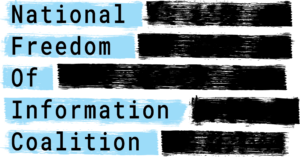
The First Amendment Foundation and a local chapter of the League of Women Voters Florida held an event last week to discuss the surge of fake news in websites and social media over the past year.
Telling the difference between false and real news or something in between can be a real nightmare. It’s even harder with the proliferation of information (and misinformation) sources from newspapers, radio, and television to websites, Facebook, Twitter and — why not? — Snapchat.
The egregiously false headline “Pope Francis endorses Trump for president” became one of the most popular stories on Facebook during the 2016 election, and even outperformed real news on social media and traditional media outlets.
To highlight the phenomenon, the First Amendment Foundation and the St. Pete chapter of League of Women Voters Florida held a panel discussion called “Fake News vs. Real News & How to Tell the Difference” last week. The event had panelists Amy Hollyfield (PolitiFact), Matt Brown (WFTS), Graham Brink (Tampa Bay Times) and moderator Tim Nickens (Tampa Bay Times) who talked, on March 30, about how to identify where a story comes from, and what’s behind it.
You may remember Donald Trump’s first press conference as President-elect when he pointed at CNN’s Jim Acosta and said: “You are fake news!” and refused to even hear Acosta’s question. Since then, the Commander in Chief of the USA has filled his Twitter feed with the words “fake news” in referring to major media outlets such as The New York Times, ABC, and CBS after they published unflattering or critical coverage of Trump.
Do we blame Trump?
Stories posing as real news are nothing new. It goes back to ancient times, with campaigns of disinformation during the Roman wars and along the 20th century with the Nazi propaganda filled with Anti-Jewish messages. But also, the appearance of blogs and social media in the 2000’s changed the way people produce and consume the news.
“One thing that people don’t notice is the algorithms that help [to] drive [the information]. The things that a computer can do just to make it fly into thousands of people’s streams,” Hollyfield said. “But it’s also the fact that advertisers will pay for it.” [READ MORE]
